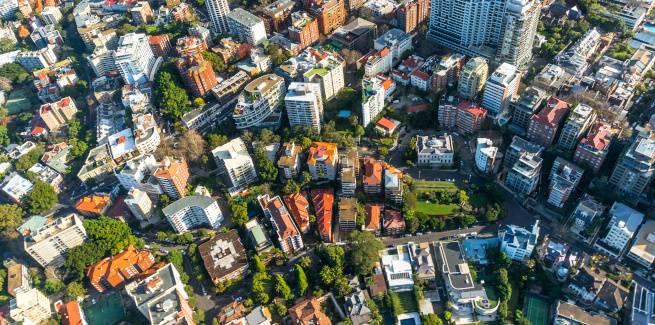Property group Domain has released residential property price figures for the three months to 31 March 2020, reporting that detached housing values increased nationwide over the period.
Sydney recorded the sharpest increase over the March quarter (2.6 per cent), followed by Hobart (2.2 per cent), Melbourne (2 per cent), Darwin (1.2 per cent), Brisbane (0.6 per cent) and Canberra (0.3 per cent).
House prices remained stable in Adelaide and Perth, but the capitals recorded unit price gains of 4.2 per cent and 1.6 per cent, respectively.
Unit prices also rose in Sydney (2.7 per cent), were stable in Hobart, and fell in Darwin (8.2 per cent), Canberra (5.2 per cent), Brisbane (4.2 per cent) and Melbourne (0.4 per cent).
The March quarter result was reflective of a broader rebound in the housing market, which commenced in mid-2019 off the back of interest rate reductions and the easing of regulatory restrictions.
However, the rebound is set to be short-lived, with analysts now expecting housing market activity to “plunge” in response to the economic fallout from the COVID-19 crisis.
According to Domain economist Trent Wiltshire, subdued population growth, particularly net over search migration (NOM), would add to housing market headwinds.
“Lower immigration means reduced demand for property, which will put downward pressure on prices,” he said.
“Lower population growth will be one of a number of factors that will contribute to property price falls in 2020. Other factors are rising unemployment and concerns about job security, expectations of price falls, larger households due to people wanting to save money, some forced sales, and restrictions on transacting real estate (such as the ban on auctions and open for inspections).
“Property sales are likely to decline by even more than prices.”
Mr Wiltshire said the impact of weak NOM would be varied from state to state, with Sydney and Melbourne to be “hit hardest”.
“In recent years, Sydney has tended to attract a large number of migrants, but then lose residents to other cities and regions,” he said.
“So it’s possible that Sydney and Melbourne will be hit hardest by the reduction in migrants, which would mean a larger fall in property prices in Australia’s two largest cities.”
The economist added that as a result of the dip in population growth, housing construction activity would also wane.
“Housing construction looked to be turning around in late 2019, with approvals and commencements bottoming out and property prices, a leading indicator of construction activity, rising,” he said.
“But weak population growth in the year ahead will likely mean low rates of home building for at least the next year.”
Mr Wiltshire continued: “Lower population growth, and larger households, will mean fewer homes are needed in the short term. Developers will likely delay commencing building and will likely hold off buying land for new developments.”
However, some analysts – including CoreLogic’s head of research, Tim Lawless – are forecasting a V-shaped recovery in the housing market once the current COVID-19 crisis abates.
“Once the virus is contained, we expect economic conditions to quickly improve, driving a turnaround in consumer spirits, which should flow through to housing market activity,” he said.
[Related: Auction volumes bounce following Easter lull]
 ;
;
